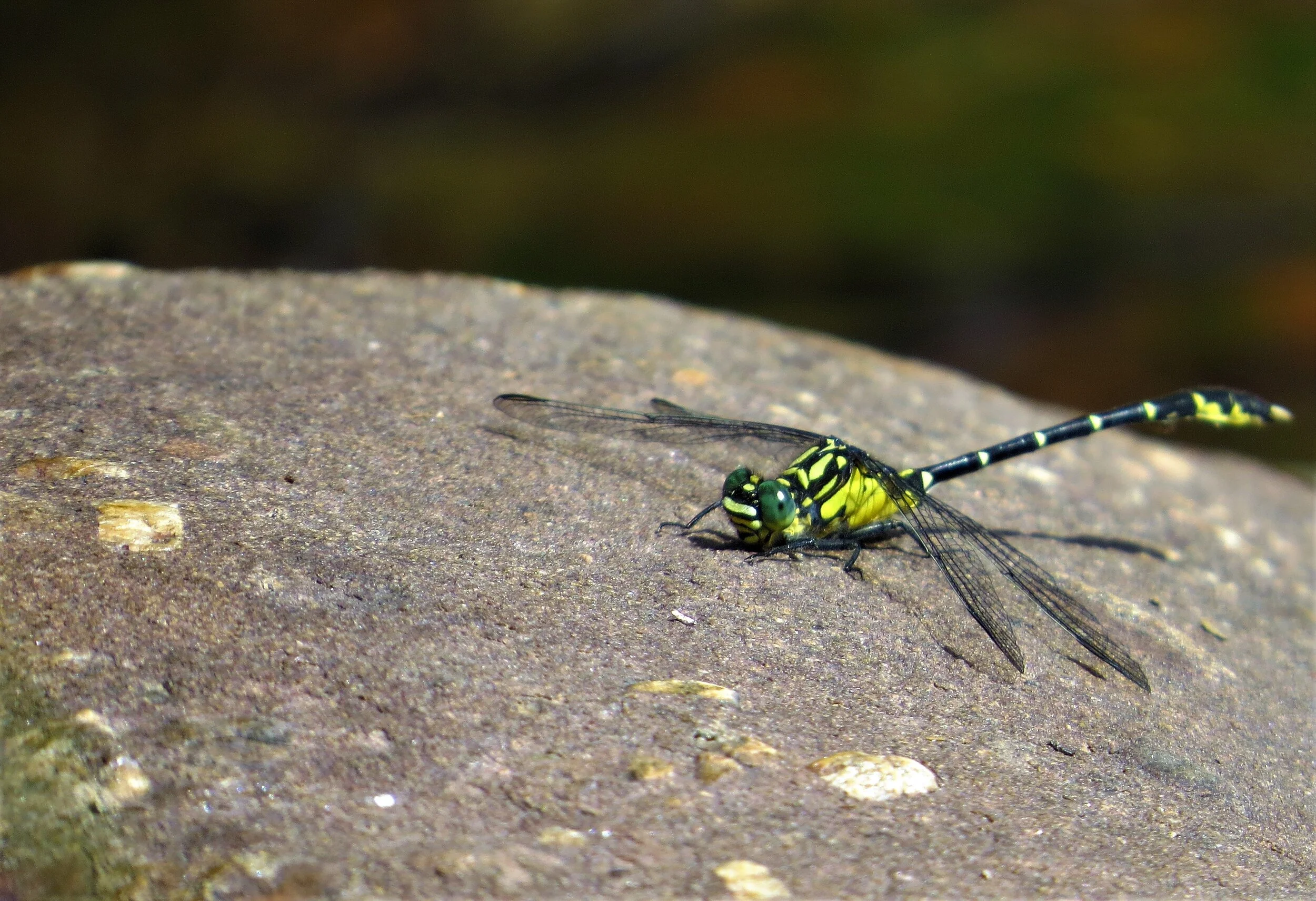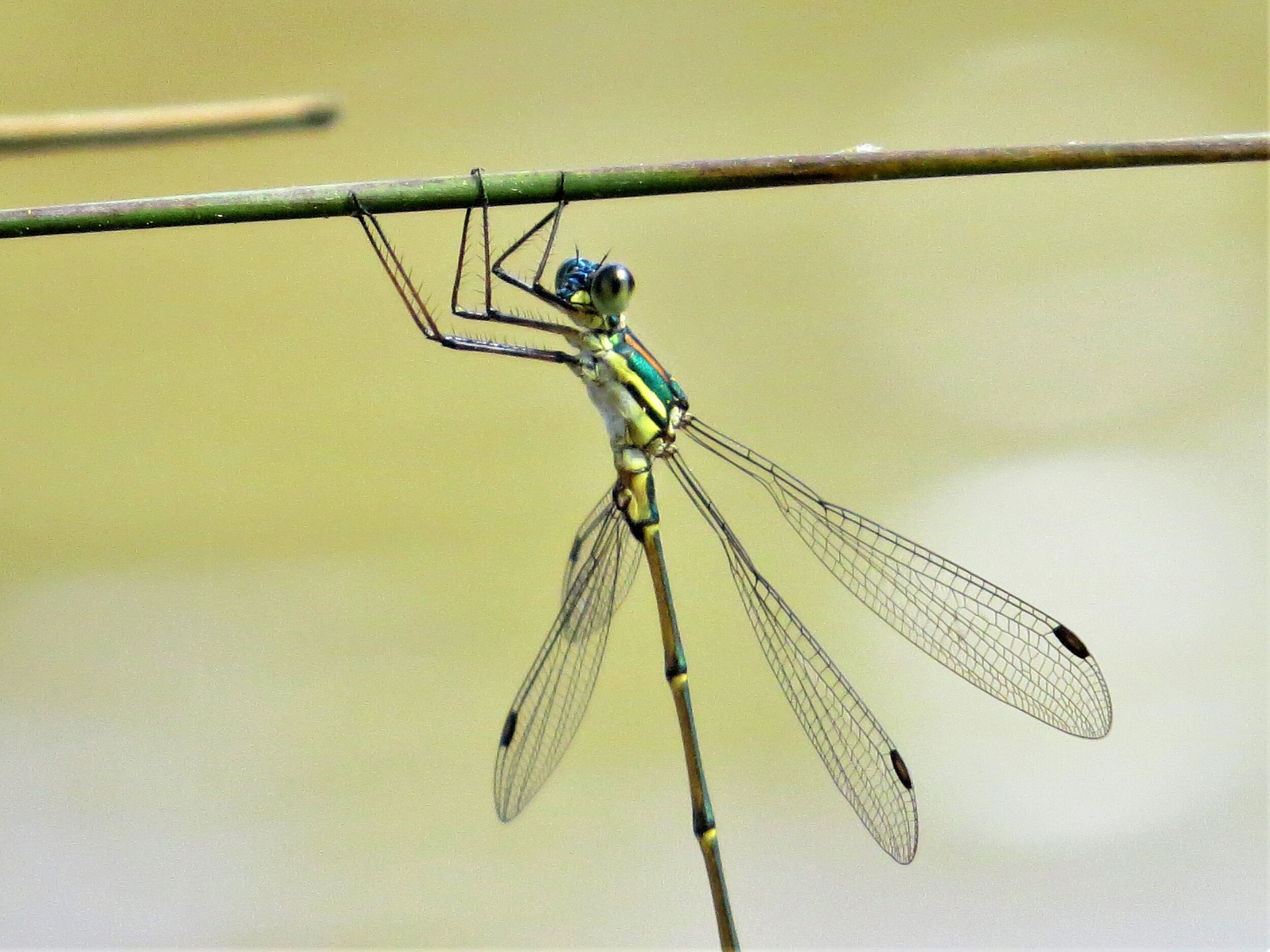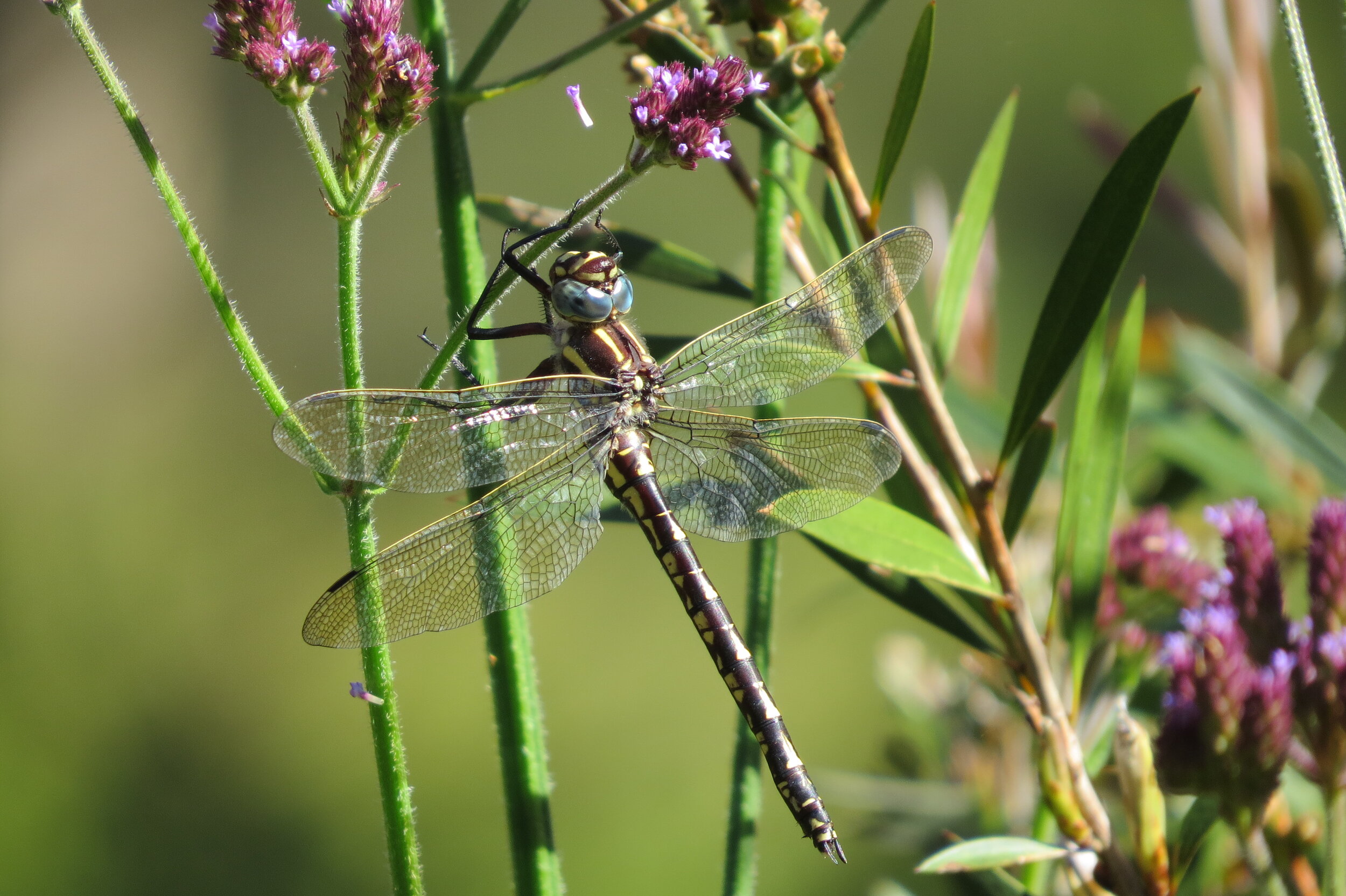Of the roughly 330 species of Dragonfly and Damselfly in Australia, Victoria has nearly 80 species.
The greatest diversity is in Eastern Victoria and the lowest in the waterless mallee region. Peak season is from November to March, with the months of June, July and August having virtually none flying at all.
Pictured below are a few representatives of most of the families occurring here to give an idea on their diversity
DAMSELFLIES (ZYGOPTERA)
Needles ( family Synlestidae) Just one species occurs in Victoria, the Bronze Needle. A large slender damselfliy that occurs along streams and rivers of Eastern Victoria. Due to its very long body it prefers to hang in streamside vegetation
BRONZE NEEDLE
Ringtails (family Lestidae) This is a widespread family of Damselflies with seven species represented in Victoria, a number of which are quite common. Most have some blue coloration.
SLENDER RINGTAIL
BLUE RINGTAIL
WANDERING RINGTAIL
Rockmasters ( family Lestoideidae ) These large robust Damselflies are strong flyers and inhabit rocky rivers and streams Two species occur in VIc, both in the east of the state. The larger Arrowhead Rockmaster is pictured here, it flys a little later in summer than the slightly smaller Whitewater Rockmaster
ARROWHEAD ROCKMASTER - MALE
FLATWINGS ( family Argiolestidae ) Four species have been recorded in Victoria. Unlike most Damselflies, Flatwings hold their wings spread out when perched. The Common Flatwing is as its name suggests is commonly seen along wooded streams and rivers throughout Eastern and parts of south-western Victoria. As with most Odonata, the males and females are quite different
COMMON FLATWING - MALE
COMMON FLATWING - FEMALE
THREADTAILS ( family Platycnemidae ) Just the Orange Threadtail in Victoria. They like slow stretches of streams and rivers, and may be found in the north and south of the state
ORANGE THREADTAIL Male
BILLABONGFLYS, BLUETAILS, RIVERDAMSELS etc ( Family Coenagrionidae) Eleven representatives of these small to medium sized damselflies occur in VIctoria with diverse colour variations. The Aurora Bluetail is a tiny, very common and widespread species
EASTERN BILLABONGFLY
RED AND BLUE DAMSELFLY
AURORA BLUETAIL
DRAGONFLIES ( ANISOPTERA )
DARNERS, EMPORERS and HAWKERS ( Family Aeshnidae ) 16 species of these fairly large and powerful Dragonflies occur in Victoria with the common and widespread Blue-spotted Hawker and Australian Emporer both fairly easy to identify. The other 14 species of Darner can be a challenge .The Darners mostly occur in the rivers and streams of the Great Dividing range and other high rainfall regions
AUSTRALIAN EMPORER
BLUE-SPOTTED HAWKER
UNICORN DARNER
SOUTHERN RIFFLE DARNER
HUNTERS AND VICETAILS (Family Gomphidae ) 5 Hunters and 2 Vicetails occur in Victoria. The Murray River Hunter is now presumed extinct. Medium sized dragonflies coloured black and yellow, the markings on the top of the abdomen is often key to identification. They mostly occur in northern and eastern Victoria
YELLOW-STRIPED HUNTER
SOUTHERN VICETAIL
TIGERTAILS ( Family Synthemistidae ) 7 species of Tigertail occur in Victoria. They are small to medium sized and look largely similar. They mostly occur in the rivers and streams of high rainfall areas, and hang from vegetation when perched. One species, the Royal Tigertail occurs in drier parts of north-central and NE Victoria in swamps, dams and streams that dry to pools
SMALL TIGERTAIL
GOLDEN TIGERTAIL
ROYAL TIGERTAIL
EMERALDS ( Family Corduliidae ) only 3 species in Victoria. The Australian Emerald is fairly common in southern Victoria and is best told from the abundant and very widespread Tau Emerald by a black, not yellow leading edge to the wing.
AUSTRALIAN EMERALD
TAU EMERALD
PERCHERS, SKIMMERS, GLIDERS, etc ( Family Libellulidae ) A diverse group of small to medium sized Dragonflies with 12 species occurring in Victoria. Blue Skimmers and Wandering Perchers are two of our commonest and most widespread species
MALE BLUE SKIMMER
FEMALE OR POSSIBLE YOUNG MALE BLUE SKIMMER
MALE WANDERING PERRCHER
FEMALE WANDERING PERCHER


























